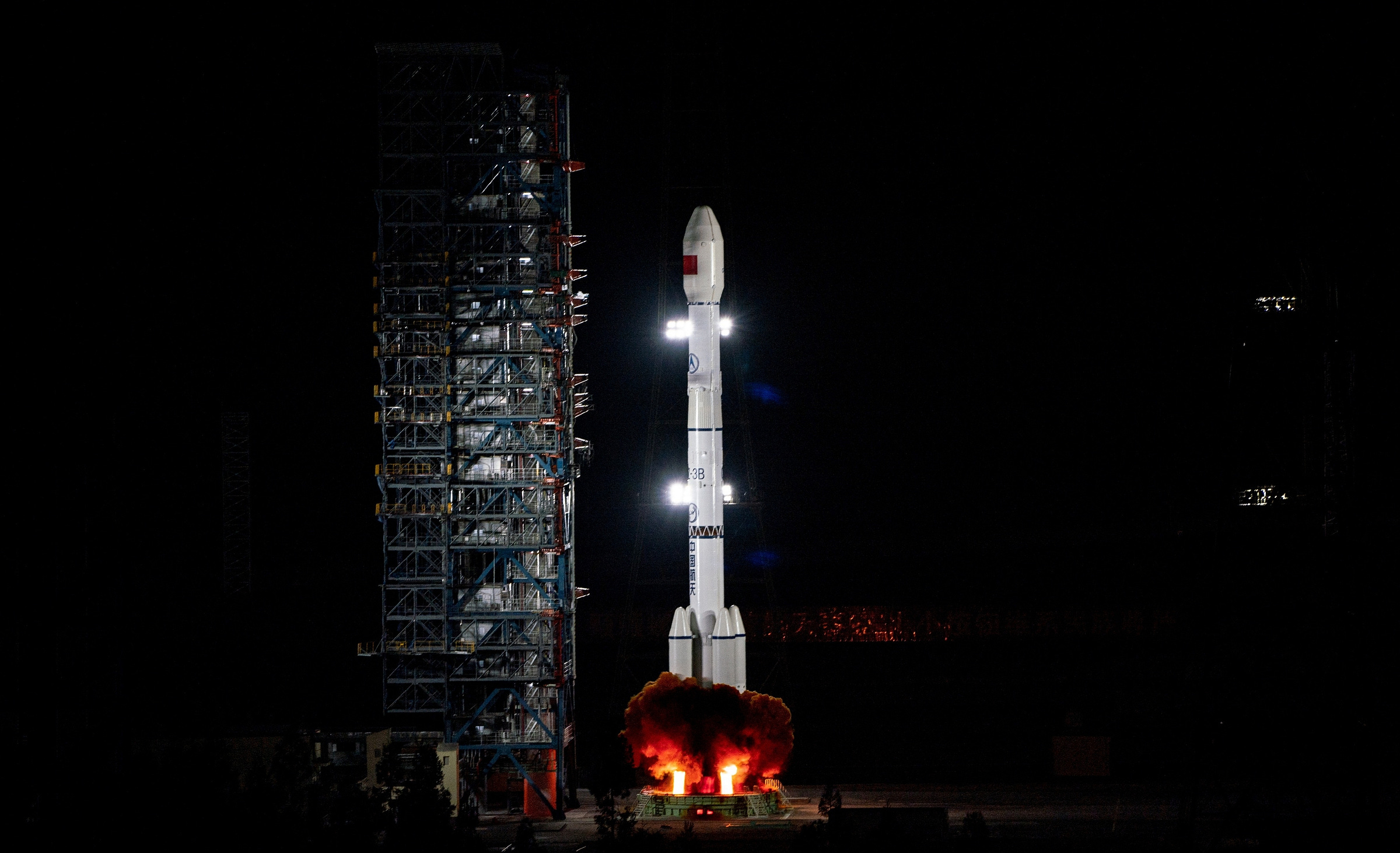New Communications for the Belt and Road [Long March 3B/E Y101]
A Long March 3B/E has launched a replacement satellite for the ChinaSat fleet.
Just barely over a month after its previous mission, a Long March 3B/E lifted off from Launch Complex 2 at the Xichang Satellite Launch Center at 20:11 pm China Standard Time, or 12:11 pm Universal Coordinated Time, on February 22nd. For this launch, a single satellite was being delivered to a geostationary transfer orbit.
The satellite being launched is ChinaSat-10R (中星10R), a replacement for the fourteen-year-old ChinaSat-10. ChinaSat-10 has one year left on its expected operational life while being based on the older DongFangHong-4 bus, its replacement is based on the newer 4E bus. This newer satellite bus boasts greater data throughput and better efficiency for onboard systems.
Uses for the new ChinaSat-10R include providing terrestrial and marine communications across China as well as Belt and Road Initiative nations. With the satellite, countries will have robust communications in emergencies, reliable connections for new smart industries based in rural regions, and a stronger digital economy. The spacecraft was reportedly developed by the China Academy of Space Technology, the nation’s premier spacecraft contractor.
Speaking after the Long March 3B/E’s flight on January 7th, the China Aerospace Science and Technology Corporation expects the rocket to perform over ten missions in 2025. An increased cadence is said to be possible thanks to continuous optimizations to vehicle production, testing, launch preparations, and team training.
So far three Long March 3B/E’s have launched this year, with two more expected to take flight in March. Additionally, toward the end of last year, the China Academy of Launch Vehicle Technology stated that they were aiming to launch the Long March 3B/E over a dozen times per year, with approximately fifteen days between missions.
Today’s mission was the 104th launch of a Long March 3B vehicle, and the 560th launch of the Long March launch vehicle series. This was also the 8th launch from China in 2025.
Liftoff video via 航天五线谱 and 空天逐梦 on Weibo, as well as 我们的太空 on WeChat.
Check out the previous Long March 3B/E launch
What is the Long March 3B/E?
This section is for those less familiar with China's Long March series of launch vehicles.
The Long March 3B is an older-generation geostationary orbit workhorse of the China Academy of Launch Vehicle Technology. The first two stages and four boosters of the rocket burn Dinitrogen Tetroxide and Unsymmetrical Dimethylhydrazine, with liquid hydrogen and liquid oxygen in the third-stage.
Over the rocket's almost twenty-eight-year launch history, two versions of the vehicle have flown, the 3B and 3B/E. Since 2012 only the 3B/E variant has flown due to its increased payload capacity. The payload capacity of the launch vehicle is currently as follows:
11,500 kilograms to low Earth orbit
7,100 kilograms to a sun-synchronous orbit
5,500 kilograms into a geostationary transfer orbit
2,000 kilograms into geostationary orbit
The first-stage is powered by four YF-21C engines that burn Dinitrogen Tetroxide and Unsymmetrical Dimethylhydrazine to generate 302 tons of thurst, while the boosters are powered by one YF-25 engine burning the same fuel to generate 72 tons of thrust each. Combined the four boosters and first stage generate a thrust of 590 tons. The second stage is powered by one YF-22E and four YF-23F vernier engines that also burn Dinitrogen Tetroxide and Unsymmetrical Dimethylhydrazine to generate 81 tons of thrust. The third-stage is powered by two YF-75 engines that burn liquid hydrogen and liquid oxygen to generate 17 tons of thrust.
On the launch pad, the Long March 3B/E is 56.3 meters tall and weighs 458,970 kilograms when fully fuelled. The first and second-stage have a diameter of 3.35 meters, while the third-stage has a diameter of 3 meters, along with the four boosters diameter of 2.25 meters, and the fairing has a diameter of 4.2 meters.
So far every Long March 3B launch has occurred from the Xichang Satellite Launch Center, in the south of Sichuan province.











